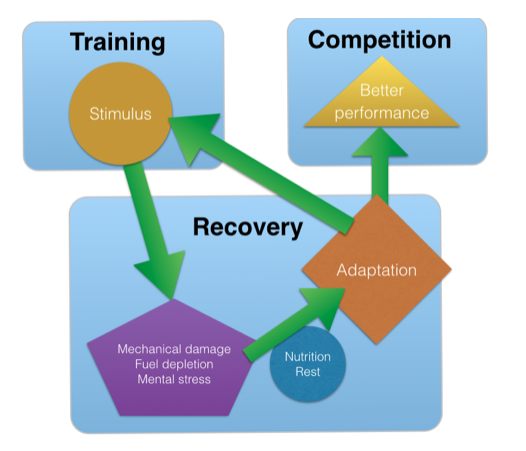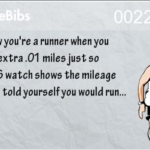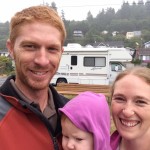A Little R&R – article republish
| June 20, 2018 | Posted by Melinda under Uncategorized |
This is the second essay I wrote and submitted for consideration of the Jim Steere Scholarship offered to veterinary students through the Ride and Tie Association. I had received the scholarship award the previous year and encouraged, I decided to try my luck again the following year. As previously mentioned, archived issues of the newsletter where the article was published were removed from their website. I’ve linked a copy here and republished the text below. I hope this information is still relevant and useful!
———————————————————————————————-
Click here for original article – pdf
As I start my final year at UC Davis Veterinary School I continue to have a deep passion for horses, running, and endurance sports. Brought into the sport of ride and tie in 2012 by my veterinary school mentor Dr. Michele Jay-Russell and her horse Stashi, this season I’m bringing along a newbie of my own to introduce her to the wonderful world of ride and tie. Having previously convinced this friend that 100 mile endurance rides were “fun” and trail running was “enjoyable”, all that remained this summer was to combine the two and have her mark her calendar for the next ride and tie event. If all goes to plan we will finish the long course 2014 championships hand in hand. It is with deep gratitude to this incredible sport that I am submitting my essay “A Little R&R” for consideration for the 2014 Ride and Tie Association Veterinary Student Scholarship.
Sincerely,
Melinda Faubel
DVM Candidate, University of California Davis School of Veterinary Medicine, c/o 2015
Title: “A Little R&R”
As endurance athletes we are pros at putting one foot in front of the other – even when the more rational part of us is confused why we are still moving forward. What’s often harder is that “other” phase of training, the part where we are NOT logging the miles and indulging in a bit of rest and relaxation.
Adaptation, the biological process that allows us to go further and faster, is dependent on the relationship between how much stimulus we apply during training and the quality of the recovery period.
Put simply: Recovery – it does the body good.
Until recently I thought “completely recovered” simply meant “no muscle soreness”. However, this completely ignores two other major consequences of training: fuel depletion and psychological stress. A complete recovery includes not only muscle repair, but also replenishing mental and physical reserves.
Recovery can be measured by evaluating physical damage, emotional readiness, stress response, and central fatigue. Using very simple tools and common sense we can determine how recovered the athlete is. Are handrails still your best friend? Is the horse still a bit stiff? Say with enthusiasm: “Let’s go do that again!” Did you feel slightly sick to your stomach and have an overwhelming urge to drink lemonade under a shade-tree? Resting heart rate high? A “yes” answer indicates inadequate recovery. Judging the horse’s emotional readiness is more tricky, but evaluating attitude towards work against what is “normal” and respecting the feedback is probably appropriate. Central fatigue is an emerging concept and is different than simple muscle fatigue. For years in my training logs I documented when the “bounce” came back to my legs, not realizing it had more to do with my head and less to do with actual muscle recovery. The simplest way of assessing central fatigue in humans is the number of times you can tap an index finger in a period of time, compared to previous tests. Because one of the ways that central fatigue can manifest is increased ground contact time in a stride, evaluating a horse’s gait could indicate the degree of central fatigue present.
Recovery time isn’t static. How long it takes the athlete to completely recover is directly dependent on how much stress and which stressors were present during the training session. Individual athletes respond differently to training sessions. Some runners find logging long miles solo easy, some don’t. Some horses handle the mental stress of being tied to a tree as horses rush past, others don’t. Because the rate of recovery can differ between muscle, brain, and fuel depletions, you can be mentally ready to log another hard training session before you are physically ready. Honestly assessing yourself and your horse’s recovery patterns, including how different types of workouts affect it, is an important step towards being able to effectively plan training sessions and recovery periods.
Recovery isn’t all about shade-trees and lemonade. Understanding and recognizing the elements of recovery allows manipulation and turns recovery into a powerful training tool that allows us to address specific types of challenges that are faced in competition – but that are difficult to mimic in training.
Especially if you are like me and confess to be the world’s laziest endurance athlete.
I don’t want the injury risk that comes from logging high mileage weeks. I don’t have the time or energy to put in lots of miles. (I am a vet student after all). But I still enjoy running ultramarathons, riding endurance, and completing ride and ties. One strategy is to (carefully) manipulate recovery to improve the quality of the stimulus, and thus the amount of adaption in a specific area. Using incomplete recovery we can “fast forward” our muscles, brains, or fuel depletion to a later point in our goal race distance without having to do the actual mileage in one session. A common example is to build mileage to prepare for the physical component of longer events by performing a second training session before the athlete is fully recovered from the first. This includes back to back runs in a 24 or 48 hour window, or equine multi-day endurance events.
The mental game is a major component in endurance sports such as ride and tie where teams are on the course for several hours. The emotional willpower to gut through a tough session is a finite resource, one that can be adapted and trained like any other body reserve. Perceived fatigue is largely related to mental fatigue and stress, thus increasing the amount of concentration or stress during a workout can specifically train and adapt the psychological component. For example, thinking about tasks that require concentration, doing arithmetic equations during workouts, or deliberately planing training sessions when you and the horse are tired and stressed. Be creative! There is nothing my mare hates more than multiple loops past the trailer and very quickly I can duplicate her level of motivation at mile 40 in a short 12 mile ride. On the running side of the equation, I can closely mimic my mental state at the end of a solo 6+ hour long run by doing a 30 minute tempo run while trying to do math in my head, without music, after getting off work.
Of course it’s easy to overdo the psychological training – just like it’s easy to overtrain the physical components. Be sure you are evaluating you and your horse as individuals and applying stressors in a smart way and balance complete recovery periods with pre-fatigue sessions.
Quality and effective recovery is not easy. My advice? Figure out which parts of recovery you have the most problems with and develop assessment methods that will keep you honest. Only after learning how to evaluate recovery and taking it seriously was I able to use recovery to train better. It may not be as exciting as watching the miles pile up, but the time you spend in quality recovery is just as important as the quality miles logged out on the trail.











